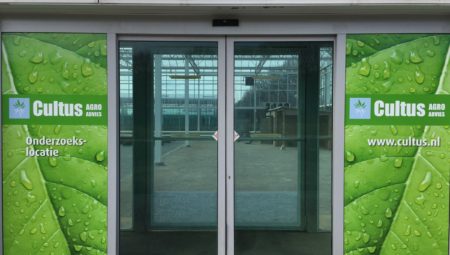Soil quality is determined by a combination of chemical, physical and biological factors. Lemmens: ‘It is an extremely complex process that still requires fundamental research to shed light on the interdependence. Whatever the case, the soil quality in some regions leaves much to be desired, for example the lack of certain nutrients. This can be attributed partly to monocultures: specific crops which are sown and harvested year after year. The emphasis is on achieving a maximum harvest in a relatively short period of time. This is only encouraged by the high ground mobility: land is leased out faster, which can result in a lack of long-term vision in the primary sector.’
Underground value first
The plan of Innovatief Platteland (on behalf of the farmers) and the agricultural contractors De Boer and Heldens is to investigate crops which can contribute underground to the soil quality. ‘The underground value is the main thing,’ says Lemmens. ‘It is quite a revolutionary idea: usually farmers concentrate on the above-ground value. But if that decreases because of the deteriorating soil quality, the farmer will still end up in trouble. Admittedly, the ground mobility mentioned earlier remains a problem; we cannot solve that in this project. What we do want to do is examine specific crops and see the degree to which they contribute to soil health.’
Rob de Boer, owner of agricultural contracting firm De Boer in Lottum (North Limburg), can back up Lemmen’s story from practical experience. ‘We go to many farms in our region and we see that the soil in the primary sector needs a rest. The high land prices mean that the focus is on the highest possible yields. In the long term this is disastrous for the soil quality and the profitability of the farming business.’
Sorghum
Which crops are the three parties looking at? There are various ‘candidates’, including Japanese oats, hemp grown for fibre and sorghum. Sorghum has deep root systems and aerates the soil, which is good for the physical condition. Hemp grown for fibre is a rotation crop that does not need much nutrients (to give the soil a rest). It drives out parasites and combats erosion with its long roots. ‘It would be great if we could translate the ecological value into an economic value,’ asserts Lemmens. ‘That value is certainly there, but we have to quantify it. I can imagine that the government can subsidise rotation crops on the basis of this data.’
Optimum use
Hoping for funding is a shaky cornerstone for building a business case for a crop. That is why the project also pays attention to increasing the value of (parts of) the crops. As Lemmens describes it, it is about optimum use of the plant, following the example of the meat sector (carcass balancing). ‘The more these crops can bring in for the farmer, the greater the chance he will come round.’ The above crops already have applications from which farmers can earn money. Sorghum, for example, can be used as feed for cattle and the crop contains sugars and fibres. Lemmens: ‘The problem is in creating certainty: can the farmer sell these residual products for specific prices? That is not yet the case. The art is to set up chains in which farmers, processors and end users work together, for instance in a cooperative, to raise the value of these crops. The Bio Treat Center at Brightlands Campus Greenport Venlo and private participants operating at the BTC are the appropriate parties for this. If these kinds of chain collaborations come about, something beautiful can grow from them, literally and figuratively.’
The New Crops project is in the pipeline for the most part. The participating parties want some of the funding for the project to come from the POP3 programme. The rural development programme (POP) is the main instrument of the European Union for encouraging the development and innovation of the agricultural sector and making it more sustainable. The third subsidy programme, POP3, runs from 2014 to 2020.


